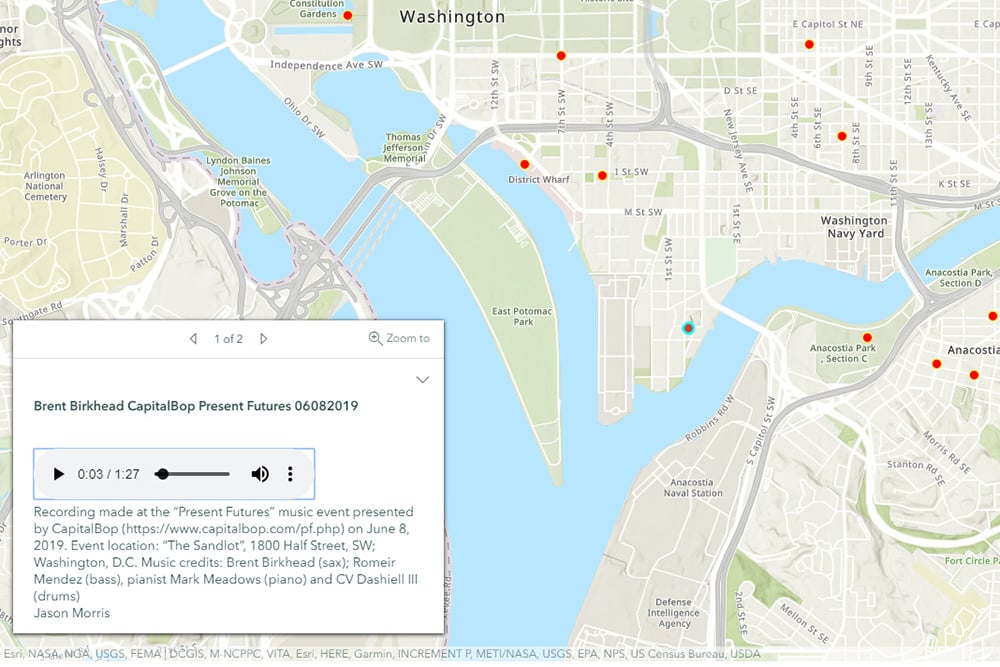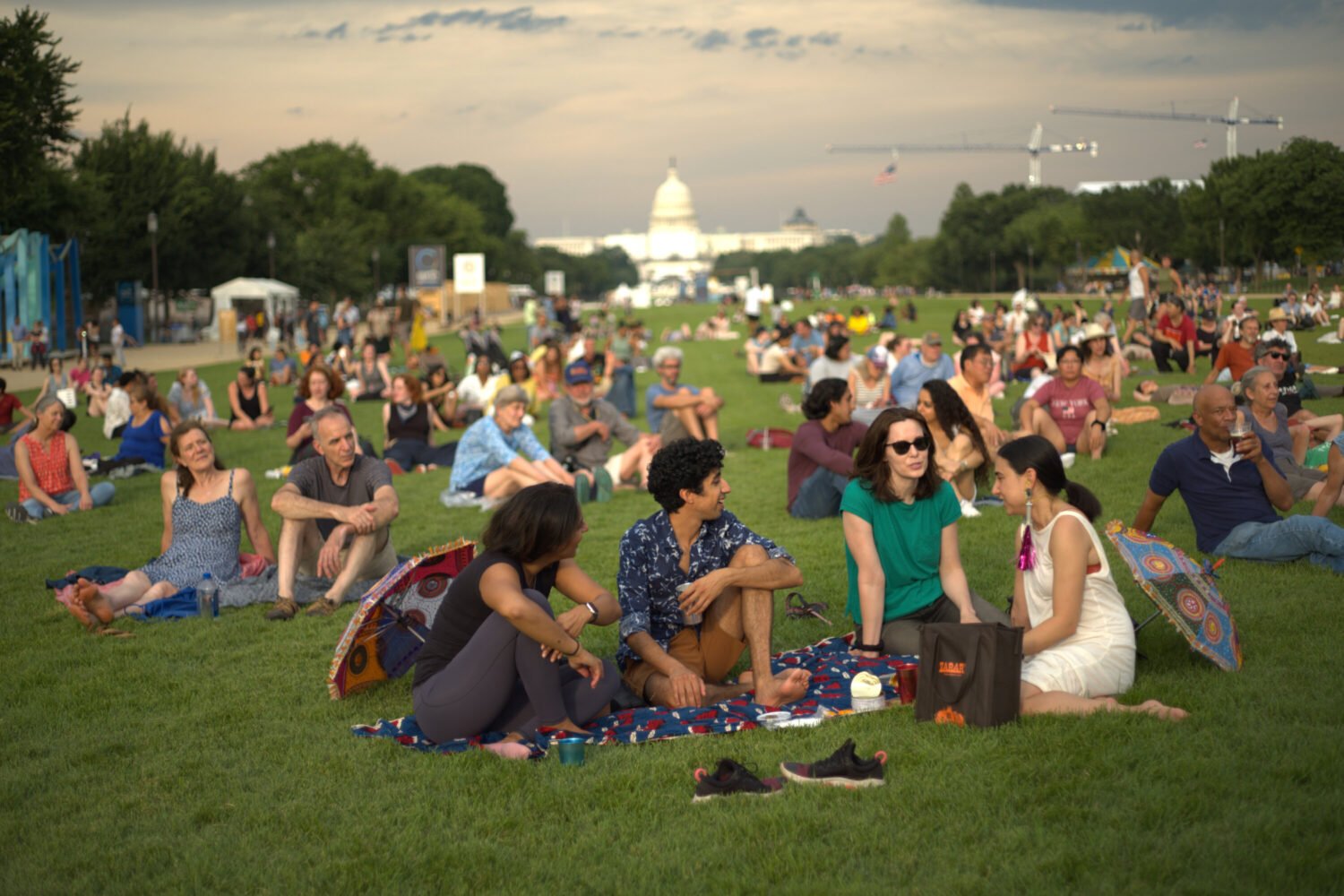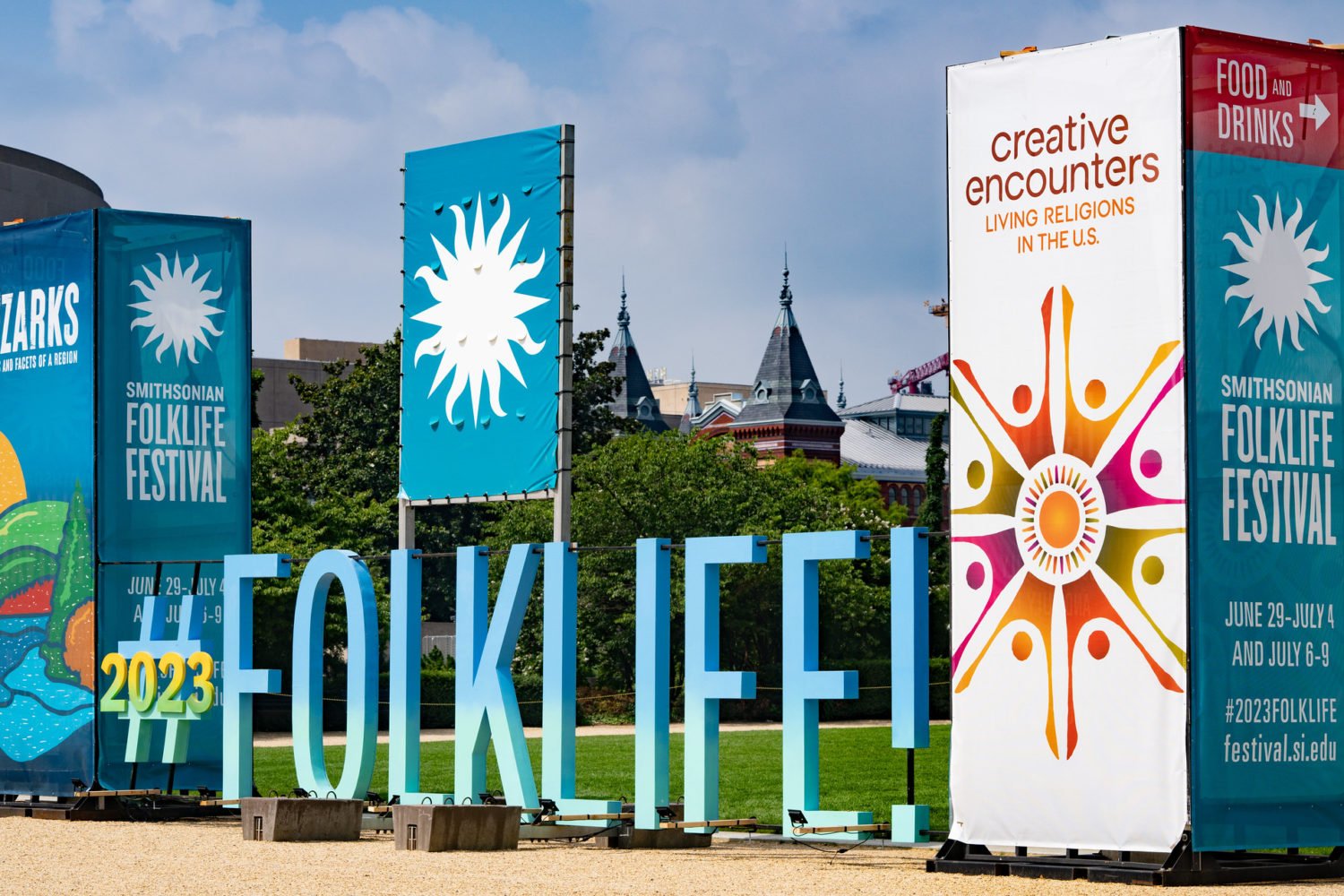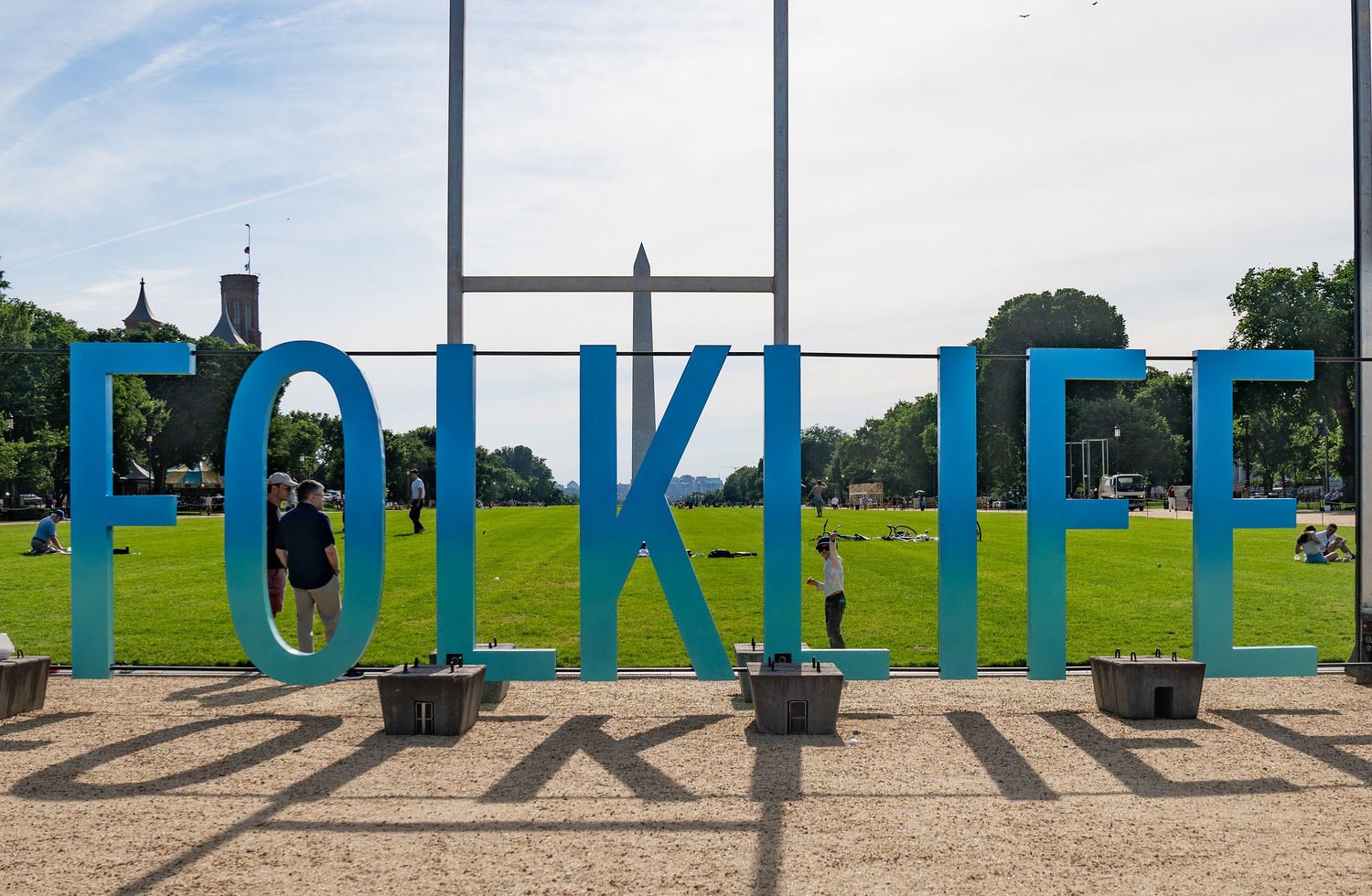In 2017, when a wildfire devastated Sonoma County, California, Smithsonian Folklife Festival curator Nichole Procopenko wanted to preserve the collective memories made in the thousands of buildings that were destroyed overnight. Procopenko lost her childhood home in that fire—she’s lived in the District for ten years but grew up in Santa Rosa—which led her to create the Mapping Our Memories project, a crowdsourced map that allowed residents to share photos of their lives before the fire.
This year, she and fellow curator Sojin Kim are taking that idea and using it for the Folklife Festival. This year’s theme is the “social power of music,” and they’ve created a DC Music Map so locals can share their DC musical and cultural experiences.
It’s a fun idea, but also rooted in a serious issue. As Procopenko and Kim began brainstorming for this year’s festival, one word kept coming up in the discussions: gentrification. “It’s not the same thing as a natural disaster, but the pain of what you once knew no longer being there is kind of [similar],” she says. “So I looked at it as an opportunity to do a similar project. We have the landscape of the city—how do we capture memories of what was once there and create this patchwork quilt of memories, specifically framed by music?”
So what should you submit? “I want all of it,” Procopenko says. “Someone’s mixtape is just as valid musically, emotionally, and historically as a performance in a club. It’s all DC, it’s all real, it’s all music, it’s all somebody’s experience.” The form itself is simple. Enter a title for the recording, the year it was made, the address or intersection where it was recorded, and a brief description (“behold, my tambourine street performance from 1989”). Contributors can also submit photos. “We hope people will reach into their memories and upload things from the past, not just today,” Procopenko says, “so you can see a layering of everything that has taken place in these buildings and this city that is rapidly changing.”
Kim adds that the curators will incorporate recordings the Smithsonian Center for Folklife and Cultural Heritage has collected for half a century. “We have these audio recordings over the years that capture street performers in the 1970s in DC—gospel musicians, bluegrass, punk rock, go-go at the festival,” she says. “So we want to get some of these on the map as well to provide portals into what we have in our collection.”
The goal is to publish the map online in the fall, along with eight commissioned videos from artists in each ward who will create “a soundscape of what their ward sounds and feels like to them,” Kim says.
To submit your audio and images, visit the DC Music Map website.




















